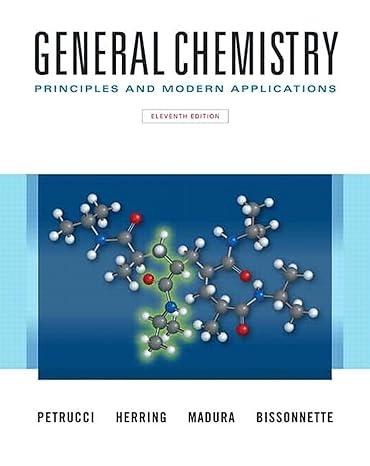The method of Exercise 98 is used in some bomb calorimetry experiments. A 1.148 g sample of
Question:
The method of Exercise 98 is used in some bomb calorimetry experiments. A 1.148 g sample of benzoic acid is burned in excess O2(g) in a bomb immersed in 1181 g of water. The temperature of the water rises from 24.96 to 30.25 °C. The heat of combustion of benzoic acid is -26.42 kJ/g. In a second experiment, a 0.895 g powdered coal sample is burned in the same calorimeter assembly. The temperature of 1162 g of water rises from 24.98 to 29.81 °C. How many metric tons (1 metric ton = 1000 kg) of this coal would have to be burned to release 2.15 x 109 kJ of heat?
Exercise 98
An alternative approach to bomb calorimetry is to establish the heat capacity of the calorimeter, exclusive of the water it contains. The heat absorbed by the water and by the rest of the calorimeter must be calculated separately and then added together. A bomb calorimeter assembly containing 983.5 g water is calibrated by the combustion of 1.354 g anthracene. The temperature of the calorimeter rises from 24.87 to 35.63 °C. When 1.053 g citric acid is burned in the same assembly, but with 968.6 g water, the temperature increases from 25.01 to 27.19 °C. The heat of combustion of anthracene, C14H10(s), is -7067 kJ/mol C14H10. What is the heat of combustion of citric acid, C6H8O7, expressed in kJ/mol?
Step by Step Answer:

General Chemistry Principles And Modern Applications
ISBN: 9780132931281
11th Edition
Authors: Ralph Petrucci, Jeffry Madura, F. Herring, Carey Bissonnette





